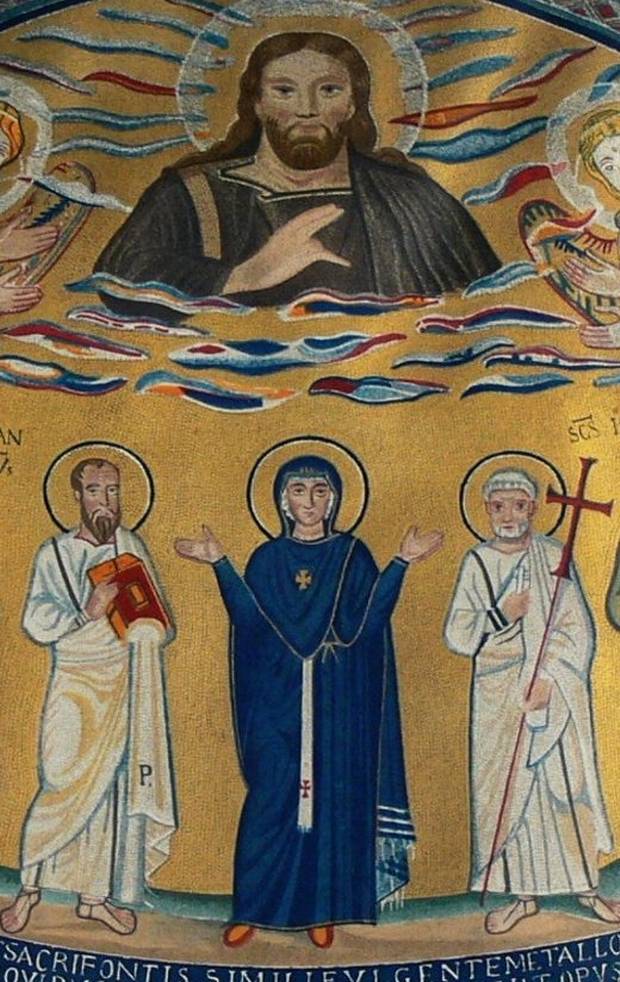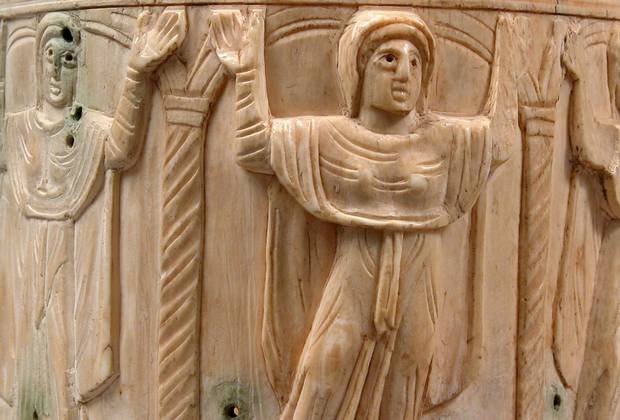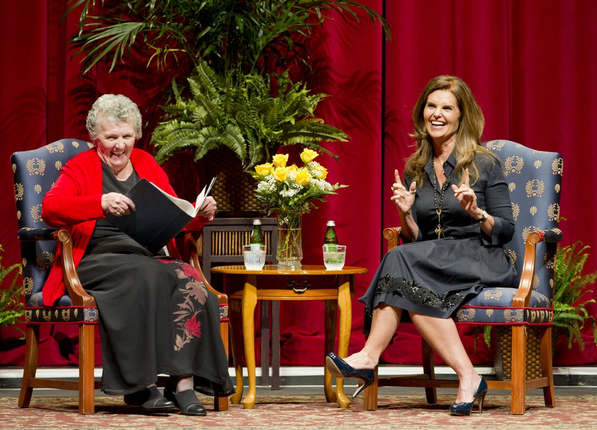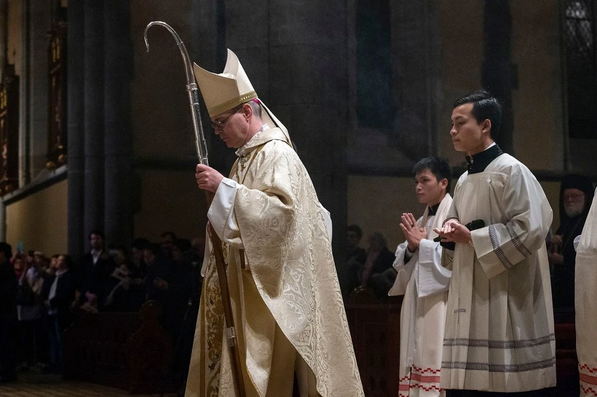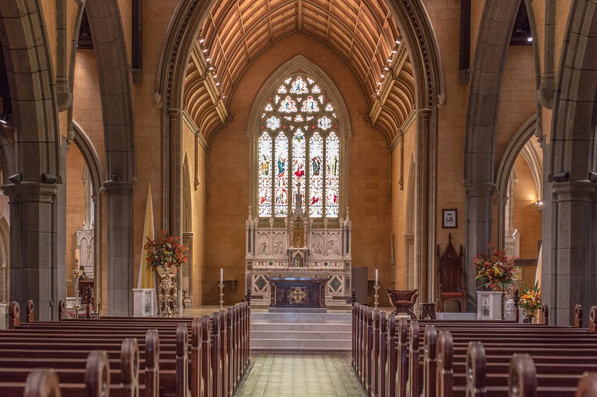
By Deena Yellin
For years, Jim Hammill searched for a church where he could worship in the Catholic tradition that he loved. He grew up attending a Roman Catholic Church, but felt ostracized after his divorce and remarriage to a woman in a Lutheran Church.
The Catholic Church does not recognize civil divorce and Hammill did not seek a Catholic Church annulment, a declaration by a church court that a marriage was never valid according to church law.
The Caldwell resident spent the better part of his adulthood considering himself a lapsed Catholic.
“I was convinced I was going to hell,” he said.
Then, about five years ago, he stumbled into St. Francis of Assisi Catholic Church in Glen Ridge and he immediately felt the sense of belonging that he had craved.
The church is part of the American National Catholic Church, an independent religious movement established in 2009 by former Catholics who sought a more inclusive experience.
Like other breakaway Catholic-style churches across the nation, the ANCC is not recognized by the Vatican as a part of the Roman Catholic Church.
The movement has 11 branches around the country, including Kearny and Long Branch, New Jersey, as well as in New Mexico, Pennsylvania, Virginia and Connecticut. ANCC leaders say more are on the way.
Nationwide, the ANCC has over 2,000 members. It is headed by Bishop George Lucey, who is also the pastor of the St. Francis of Assisi parish.The ANCC ordains its own priests and bishops.
The Church in Glen Ridge draws anywhere from 50 to 100 worshipers to its regular Sunday Mass.
Many of the group’s fundamental beliefs and rituals are similar to those of Roman Catholicism, yet it offers a more progressive approach that is in sharp contrast to Rome. For one thing, women can be ordained, priests can marry, and openly gay priests and LGBT worshipers are welcomed. There is full sacramental participation by all, and reproductive choice is supported.
“I immediately felt like this is what Catholicism was meant to be,” said Hammill. “It’s nonjudgmental. It’s welcoming. There are a lot of diverse people — we have people of different races and different sexual orientations, which is refreshing.”
“I grew up believing that you go to Mass on Sunday because if you don’t, it’s a mortal sin. Now I go because I really want to,” said Hammill, who recently began studying in a seminary.
Hammill’s refrain has become increasingly familiar to the church’s associate pastor, Father Geety Reyes.
“A lot of people come to us because they are dissatisfied with the Catholic Church, for a variety of reasons,” said Reyes. He added that many have recently left the church over its handling of the abuse scandals.
“We are an all-embracing parish and we welcome everyone regardless of who they are and regardless of their journey in life,” Reyes said. “We make the sacraments available to everyone.”
Reyes, who is openly gay, noted that in the early years of the church, most of its members were Catholics from the LGBT community, but now the church is drawing worshipers from traditional families and of all backgrounds, including non-Catholics.
The most famous breakaway movement in Christian history was the Reformation over 500 years ago, which gave rise to the Protestant churches. That break was as a result of theological differences. Protestants allow their clerics to marry and have children.
Another breakaway, the Anglican Church that includes America’s Episcopalian Church, grew out of King Henry VIII’s dispute with the pope over his divorces.
These days, though, dissatisfied Catholics are more likely to fade away from religious life — perhaps attending midnight Mass on Christmas and celebrating Easter in some way — than to join another church or start one.
The Pew Research Center’s 2014 Religious Landscape Study found that the percentage of Americans identifying as Catholic had fallen from 23.9 percent in 2007 to 20.9 percent (51 million) in 2014
The study found that 41 percent of all respondents who were raised Catholic no longer identified with Catholicism — and that 12.9 percent of all Americans were former Catholics.
A 2015 Pew survey also found that majorities of American Catholics wanted to see the church undertake some major changes, such as allowing priests to marry (62 percent) and women to be ordained as priests (59 percent). Almost half of respondents (46 percent) supported recognition of LGBT marriages.
For some disenfranchised Catholics, the answer has to been to break with the Vatican and join Catholic-style independent churches. These splinter groups generally utilize the Catholic liturgy and rituals, even if they reject the “magisterium” — the teaching authority of the Roman Catholic Church, as dispensed by the pope and bishops.
Pat Brannigan, the executive director of the New Jersey Catholic Conference, which represents the bishops of the state, admitted that it can be a challenge to follow the teachings of Catholicism. “Even in the time of Jesus, some of his disciplines had difficulty accepting his teachings and turned away,” he said. “Why should we be surprised that some still turn away?”
He said he was not familiar with the ANCC but asserted that it is not considered part of the Roman Catholic Church.
Alison Shapiro, a middle school teacher from Bloomfield, grew up Catholic but “was not a big fan of the Catholic dogma,” she said. She immediately realized that St. Francis of Assisi Catholic Church was different.
“It was exactly like a normal Mass, but without all the negative social stuff I didn’t agree with,” she said.
She became active in the church and is now the parish council president. A big part of its appeal, she said, is that it welcomes everyone. “You just come how you are comfortable and you are just accepted,” she said.
Like many of his parishioners, Reyes was brought up in the Roman Catholic Church but felt he couldn’t remain there because of his gay identity. The ANCC accepted him for who he was and allowed him to worship in the Catholic tradition, he said.
The 43-year-old Bloomfield resident was ordained as a deacon by the ANCC in 2012 and, several years later, as a priest.
“I never felt like I left the Catholic Church — I didn’t change anything I believed,” he said.
Complete Article ↪HERE↩!


